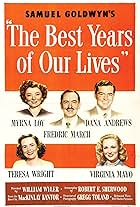In 1941, Brazilian government was aligned with Nazi movement, in spite of being against the popular desire. In Lapa (Rio de Janeiro), the rascal, pimp and smuggler Max Overseas explores the cabaret singer and prostitute Margot (Elba Ramalho), the former mistress of the chief inspector Tigrão (Ney Latorraca). When the daughter of the cabaret owner Otto Struedel (Fábio Sabag), Ludmila Struedel (Claudia Ohana), leaves her boarding school and returns to her family, she proposes Max to be her husband and partner in a legal importation company of their own. But Margot and Tigrão do not accept the idea.
"A Ópera do Malandro" is an adaptation of "Die 3 Groschen-Oper" from Bertold Brecht to the environment of Lapa, Rio de Janeiro, in 1941 with many particularities and contradictions: this musical had been the most expensive Brazilian production until 1986, with the cost of approximately US$ 800,000.00. This film was completely shot in studio, without outdoor scenes. Most of the sceneries were manufactured in rubber. Further, there was the use of brand new reflectors. The director Ruy Guerra was one of the filmmaker from the Brazilian movement Cinema Novo, and this film was completely contradictory to the philosophy of the followers of Cinema Novo, using brand new technologies and the language of Hollywood movies. The direction is excellent; the performances are fantastic, highlighting Claudia Ohana, who is simply sensational in the role of Ludmila. The cinematography is amazing, using negatives of a new film at those years and with a fantastic lighting. The costumes are very beautiful and the story is very engaging, with wonderful songs of Chico Buarque. I saw this play in the theaters, and this movie is also excellent. The song "O Meu Amor" is presented in the censored version, using the word "ventre" (belly) instead of "sexo (sex) of the original song. My vote is eight.
Title (Brazil): "A Ópera do Malandro " ("The Opera of the Rascal")






















